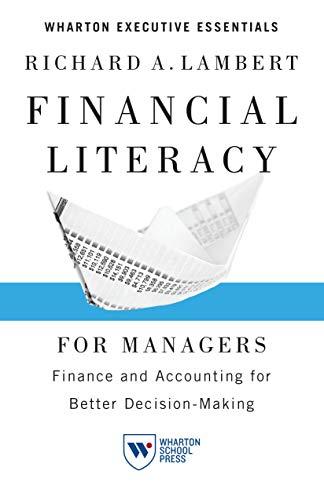Question
You are told in the case that Saito Solar was generating about 250 million in FCF in 2012. Lets see where this number comes from.
You are told in the case that Saito Solar was generating about 250 million in FCF in 2012. Lets see where this number comes from. But first, a definition: FCFt = EBITt(1-T) CAPEXt + DEPRt WCt Where EBIT is earnings before interest and taxes; CAPEX is capital expenditures; DEPR is depreciation; and WC is the change in net working capital from t-1 to t (WC is defined as current assets minus current liabilities, a quantity that tends to need to rise with sales). FCF is meant to capture cash generated by the firms operations net of expenditures needed to keep growth on track. Though depreciation is a charge taken prior to profits, it is a non-cash charge and thus added back. Additionally, because these are operational FCFs, they are independent of capital structure. Note: Saito is an all-equity firm so there are no interest payments, thus EBIT(1 T) is simply earnings (profits). From Exhibit 1 we know that in 2012 Saito made profits of 264.1 million, there was no CAPEX, and depreciation was 156.4 million. From Exhibit 2 we know that WC was 2139.7 million, up from 1969.3 million the prior year, for a WC = 170.4 million. This gives: FCF2012 = 264.1 0 + 156.4 170.4 = 250.1 *Note: if youre not following this calculation, dont sweat it because Im not asking you to calculate FCFs. The idea then is to value a firm as V = as an alternative to V = , with the math being entirely analogous. So, for example, since you know Saitos FCF in 2012 was 250.1, if you assume that Saito will generate this FCF in perpetuity (& given a cost of capital of 10%), you would estimate a value of Saito given by: V = 2,501 million Note: with the FCF approach followed in the Saito case, you are valuing the equity of the entire company (not on a per share basis). However, suppose the 3 owners, Saito, Suzuki, and Yamada each own 1,000,000 shares (so total shares outstanding are 3,000,000), then Saitos share price would be 833.67 = 2,501 million/3 million shares.
2) First up was Mr. Yoshidas Valuation. He simply said that Saito is generating 250 million in FCF in 2012 and he expects that to continue similarly for the next 20 years, meaning his valuation is simply: 250*20 = 5 billion (5000 million). This is obviously overly simplistic, what is Mr. Yoshida missing? Mr. Suzuki has a somewhat less simplistic approach, which is described in the case. Is it better than Mr. Yoshidas approach? What is still missing?
Step by Step Solution
There are 3 Steps involved in it
Step: 1

Get Instant Access to Expert-Tailored Solutions
See step-by-step solutions with expert insights and AI powered tools for academic success
Step: 2

Step: 3

Ace Your Homework with AI
Get the answers you need in no time with our AI-driven, step-by-step assistance
Get Started


